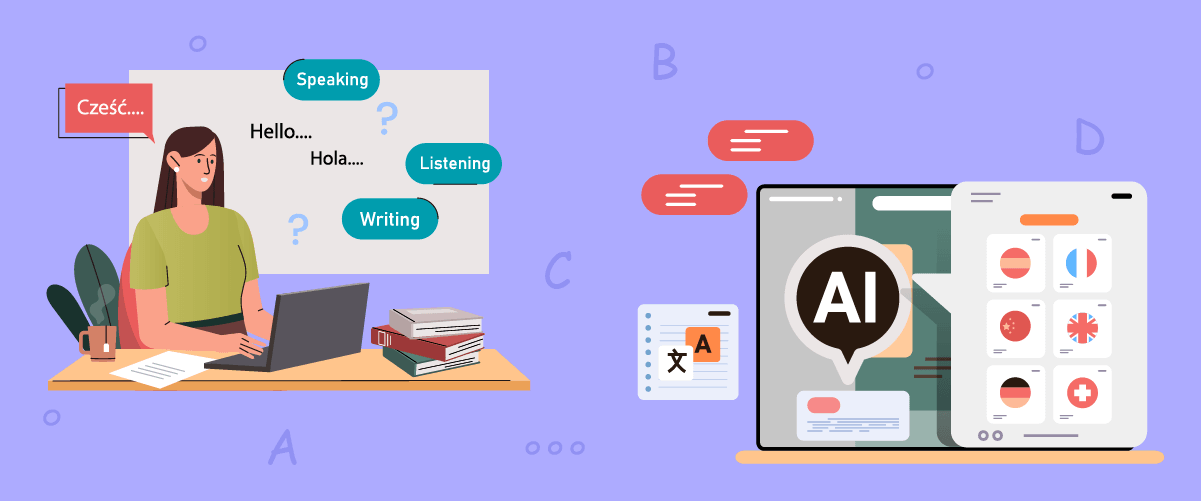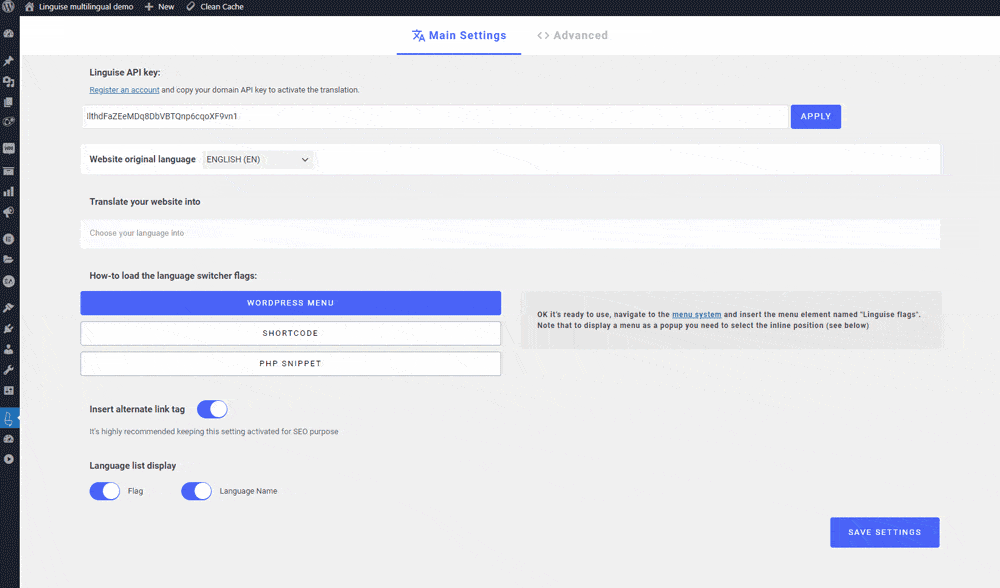Key Highlights:
- Machine translation is fast and cost-effective, but it may not always be 100% accurate, especially for less popular language pairs. Human translation, on the other hand, offers absolute accuracy and cultural sensitivity, but it can be more expensive and time-consuming.
- Different types of content require different types of translation services.
- Combine human translator and machine translation can give you efficient process in business
- When choosing between translation agencies and freelance translators, consider the size and complexity of your translation project.
Translation services are important for individuals and businesses to overcome language barriers. Professional translators ensure accurate translations that maintain the meaning, tone, and context. With the introduction of machine translation, it’s essential to consider the specific requirements of your content and target audience when choosing between machine and human translation services. In this guide, we will explore the different types of translation services available to help you choose the right one.
Types of Translation Technologies: Machine Translation vs Human Translation

Translation is a complex process involving professional translators’ expertise and the use of various technologies. Here are some key aspects to understand about the role of translators and technologies in the translation process:
Human Translation: Skills, Expertise, and Creativity
Pros: Human translations provide complete accuracy, or nearly 100% accuracy, depending on the translator’s skill level.
Human translation brings numerous benefits, primarily centered around its ability to handle nuances, cultural contexts, and specialized terminology precisely. Human translators draw on their deep understanding of both the source and target languages, ensuring that translations are accurate and resonate culturally with the intended audience. This type of translation is precious for complex texts such as literary works, legal documents, and marketing materials that require a sophisticated grasp of language subtleties, idiomatic expressions, and cultural relevance.
Cons: Human translation can be time-consuming and costly.
Translating website or documents manually requires significant effort and expertise, leading to longer turnaround times than machine translation. Remember about reducing budget translation; in fact, the cost of hiring professional translators can be prohibitive for large-scale projects or for individuals and organizations with limited budgets. Human translation processes can lack consistency, as different translators may interpret and translate the same text in slightly different ways, potentially leading to variability in the final result.
Machine Translation: AI Evolution, Uses, and Limitations
Pros: Machine translation is fast and cost-effective, but it may not always be 100% accurate, especially for less popular language pairs
Machine translation offers several distinct advantages. It is notably fast and efficient, capable of translating vast amounts of text almost instantaneously, which is particularly useful for website translations. This method is also cost-effective, highly reduces the need for extensive human touch, and efficiently manages repetitive translation tasks. Advancements in AI translations and machine learning have continuously improved the accuracy of machine translations, making it a reliable option for many routine applications.
Cons: Machine translations for localization are not entirely accurate and require editing.
However, machine translation has significant drawbacks. It often struggles to understand context, idiomatic expressions, and the subtle nuances of language, which can lead to errors and misinterpretations. These challenges are especially pronounced with less commonly spoken languages or specialized technical jargon. Machine translation cannot engage with cultural sensitivities, an essential aspect of translation that ensures content is culturally appropriate and respectful, which only human translators can effectively manage. You need to implement a localization strategy carefully.
Exploring the Different Types of Translation
Translation is not a one-size-fits-all approach. Different types of content require different translation services to ensure accurate and contextually appropriate translations. Let’s explore some of the most common types of translation services in business :
1. Technical Translation
Technical translation involves accurately conveying expert knowledge across different languages. This type of translation is crucial for various industries, such as engineering, technology, and science. In technical translation, precise terminology and specialized language are utilized to ensure the content’s accuracy and clarity. Translators working on technical materials must deeply understand the subject matter to convey complex information to the target audience effectively. Ensuring that technical content is translated correctly is essential for maintaining the quality and integrity of the original material.
2. Financial Translation
Financial translation involves decoding economic and financial materials accurately. This specialized type of translation requires a deep understanding of financial terminology and concepts. Translators working in this field must be well-versed in accounting, banking, and economic trends to ensure the precision and integrity of the translated content. Whether it is translating company accounts, bank records, or financial reports, financial translators play a crucial role in facilitating global business interactions and maintaining the accuracy of financial information.
3. Software Localization
Software localization involves tailoring digital products for diverse global markets, considering linguistic nuances, cultural references, and user interface preferences. It goes beyond mere translation, ensuring seamless user experiences across languages. By adapting software to specific cultural contexts and regional businesses, companies can effectively engage with a broader target audience worldwide. This process requires language, design, and functionality expertise to make products relevant and accessible in different languages and regions.
4. Marketing Translation
Crafting persuasive and culturally relevant messages is the essence of marketing translation. Understanding the target market, cultural nuances, and consumer behavior is crucial. Professional translators adapt marketing materials to resonate with the audience, considering language barriers and social norms. It involves accurately conveying not just words but emotions and intentions. Successful marketing translation goes beyond mere language conversion; it captures the brand’s essence and ensures that the message evokes the desired response from the target audience. This type of translation is a blend of linguistic expertise and marketing insight.
5. Website Translation
Translating website is crucial in making digital content accessible to a global audience. It involves translating website text, images, and multimedia elements to reach users in different languages. Multilingual websites give advantages, enhance user experience, and help businesses expand their global reach by adapting content to different cultural nuances and linguistic preferences.
Moreover, website translation is an excellent way to boost SEO by making websites more visible to international audiences. This results in increased engagement and conversions, ultimately leading to business growth.

6. Audio Translation
Subtitling and dubbing involve translating and adapting audiovisual content for different languages and cultures, such as movies, TV shows, and videos. Subtitlers create written translations that appear on the screen, while dubbing involves replacing the original language with a translated version recorded by voice actors. Subtitling and dubbing is important in overcoming language barriers and making multimedia content accessible to a global audience. This type of translation requires linguistic skills, cultural sensitivity, and the ability to synchronize the translated content with the visuals or audio.
Translation Agencies vs Freelance Translators
When choosing translation services, the decision between translation agencies and freelance translators depends on the project’s needs. Agencies offer a team-based approach, ideal for large, multi-language projects like global product manuals, with strong quality control and timely delivery. Freelancers provide personalized service, suited for projects requiring a consistent style, such as novels or marketing materials. They are also more flexible and may be cost-effective for smaller projects.
Pros and Cons:
Translation Agencies:
- Pros: Specialized expertise, ability to handle multiple languages, robust quality control, and timely project management.
- Cons: Potentially higher costs and less personalization in service.
Freelance Translators:
- Pros: Personalized service, flexibility to meet unique needs, and often more affordable for smaller projects.
- Cons: May lack the resources for very large or diverse language projects and the stringent quality controls of agencies.
As an alternative, you can explore freelance platforms that connect developers with skilled translators for accurate and culturally appropriate translations. However, there are still challenges that need to be addressed, such as ensuring reliability, quality, and consistency.
Combine type translation: human with automatic translation!
Integration of human expertise and rapid automatic translation technologies offers a comprehensive solution that meets both accuracy and efficiency needs. This approach leverages the speed of machine translation to handle straightforward, high-volume tasks while reserving human translators for nuanced, critical content that demands precision and cultural sensitivity. Here are some advantages of a hybrid approach:
- Speed and Scalability: Automatic translation provides instant results, making it ideal for handling large amounts of content quickly. When combined with human oversight, it ensures that translations are not only fast but also accurate and contextually appropriate.
- Cost-Effectiveness: This method can be more budget-friendly. Automatic translation tackles the bulk of the work, reducing the hours human translators need to spend, which can significantly lower costs.
- Enhanced Accuracy: Human translators can focus on editing and refining machine-generated translations, targeting errors that AI typically makes, such as misinterpreting nuances or cultural references.
Start translating your content with Linguise, now!
With Linguise support, you can write quickly, edit post translation and collaborate with many translators, not just one but many. This allows you to ensure that your content resonates accurately across different cultures and languages, and also speeds up the translation process by distributing the workload.
Linguise also offers other supporting features such as:
- Live front end editor for easy edit translation
- Perfect translation quality, 97% similar to human translation
- Providing more than 80 languages and thousands of language pairs with the best translation quality
- Compatible and integrated with more than 40+ CMS and web builders. For example, it is available in plugin translation WordPress, extensions for Joomla, etc.
- Translation exclusion features can be used to exclude translations such as brand names, specifics, or technical terms, which can be done based on excluding pages, ignoring inline, etc.
- Unlimited language addition and invitation or adding professional translators to the dashboard.
- 100% fully supports SEO, such as multilingual sitemap, automatic hreflang codes implementation, canonical URL, and various other multilingual SEO tips.
What are you waiting for? Start translating and adding a translator to your website for better multilingual quality with Linguise for more effective communication with your global audience. Register for a Linguise account!




